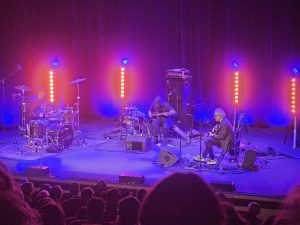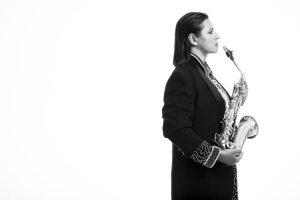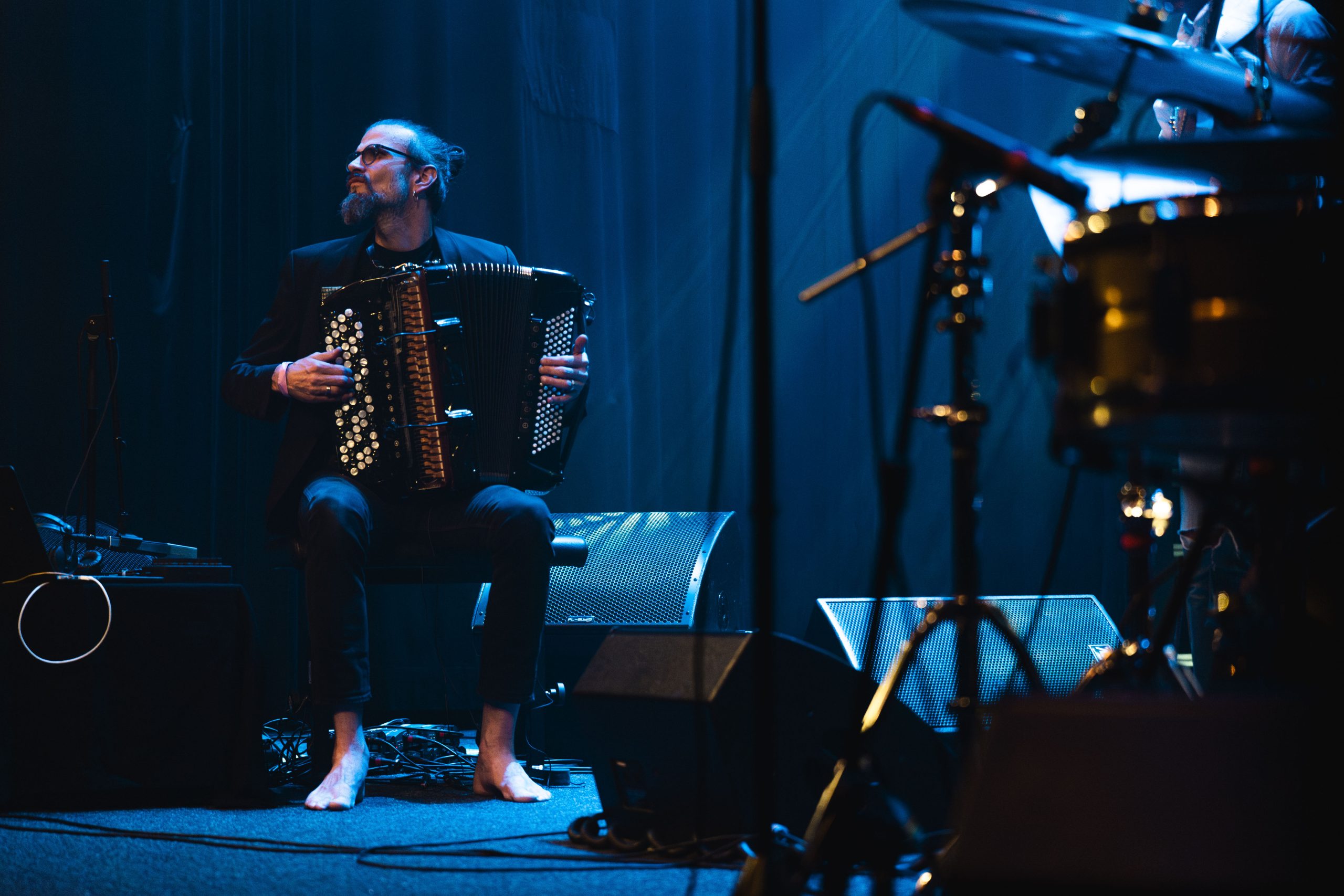
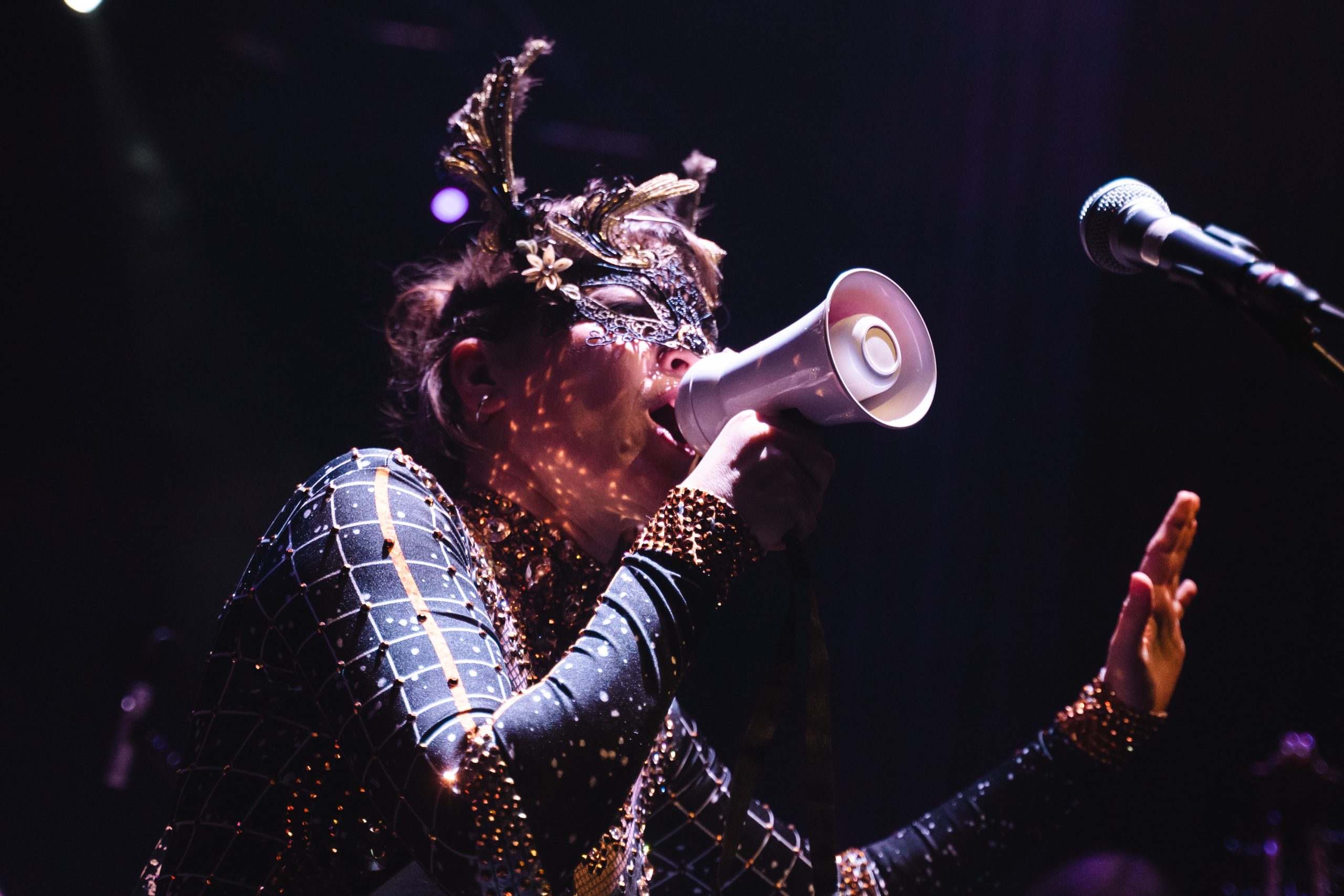
Several years ago, our editorial team’s favorite festival – the Jazzfestival Saalfelden in Austria – launched a kind of spin-off event called 3 Tage Jazz. Although it technically lasts just one day shorter than the “main” event, it was conceived as a festival of much smaller scale, with a single-digit number of performers and Kunsthaus Nexus as the main concert venue, which was usually reserved for concerts as part of the “secondary” program Short Cuts. Scheduled in January, with initially mostly smaller formations and with emphasis on those from Europe and especially Austria, this festival positioned itself as an intimate event for the informed and loyal audience of the Jazzfestival Saalfelden.
Over the years, even this festival evolved within its original concept. At this year’s seventh edition, nine concerts were held at four locations. In addition to European and Austrian top-tier musicians, Mary Halvorson and her ensemble Amaryllis emerged as the nominal star, just a few days after the release of their second album “Cloudwards”. However, the concert that this writer was most looking forward to happened on the first day at the Catholic Church in Saalfelden (Dekanatspfarrkirche Saalfelden), where Estonian saxophonist Maria Faust performed.
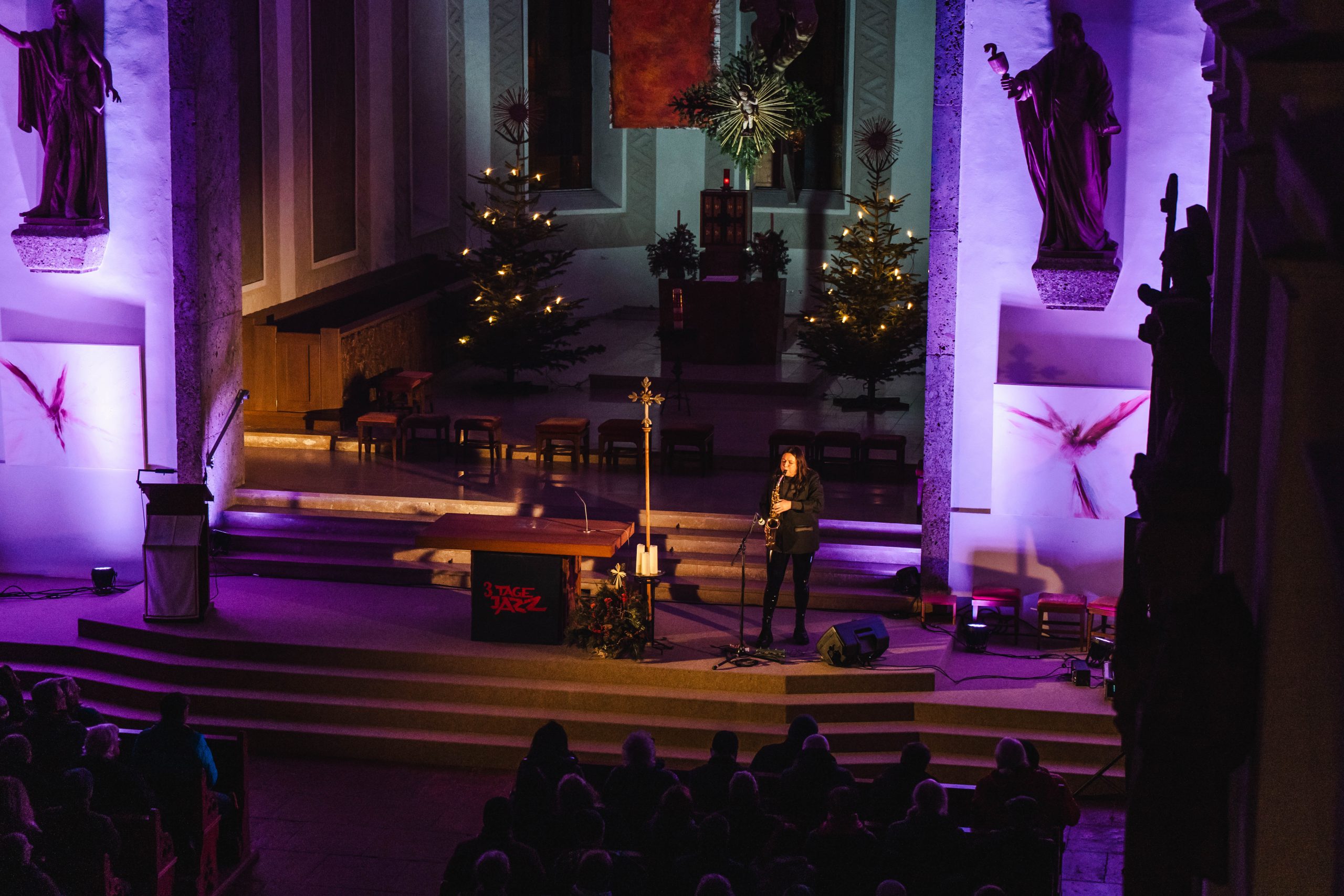
This year’s mild winter didn’t bring the idyllic snowy landscape to this small town nestled in a valley between towering mountain ranges. That Friday, a dull rain of medium intensity poured, so it was better to hurry and get inside the church to escape the ugly weather. Of course, your reviewer had no idea that the temperature inside the massive church building would be only a few degrees higher than outside, as the subjective impression remained the same after several minutes of sitting. But all of this becomes less important and is forgotten the moment the concert begins, and Maria Faust herself made a few humorous remarks about the challenging conditions for playing. On the repertoire was her solo album “Monument,” originally inspired by Kuressaare Castle in Estonia and played solo, only on the saxophone and with the help of pedals.
And it was – monumental! Creating and using loop pedals is a common practice when a solo performer wants to enrich the sound, especially if they focus on building atmosphere or creating a colorful, layered sound of their instrument instead of imitating a band. In this, Maria Faust was impeccable on the album, while live, the cathedral itself became a factor in the performance, as an architectural structure symbolically related to the castle from which it all started. It was particularly interesting in her imagination to play deep loops reminiscent of (monumental, church) organs, skillfully blended with “threatening” melodies or improvisations just steps away from the free jazz idiom. Faust is undoubtedly one of the most exciting saxophonists of today.
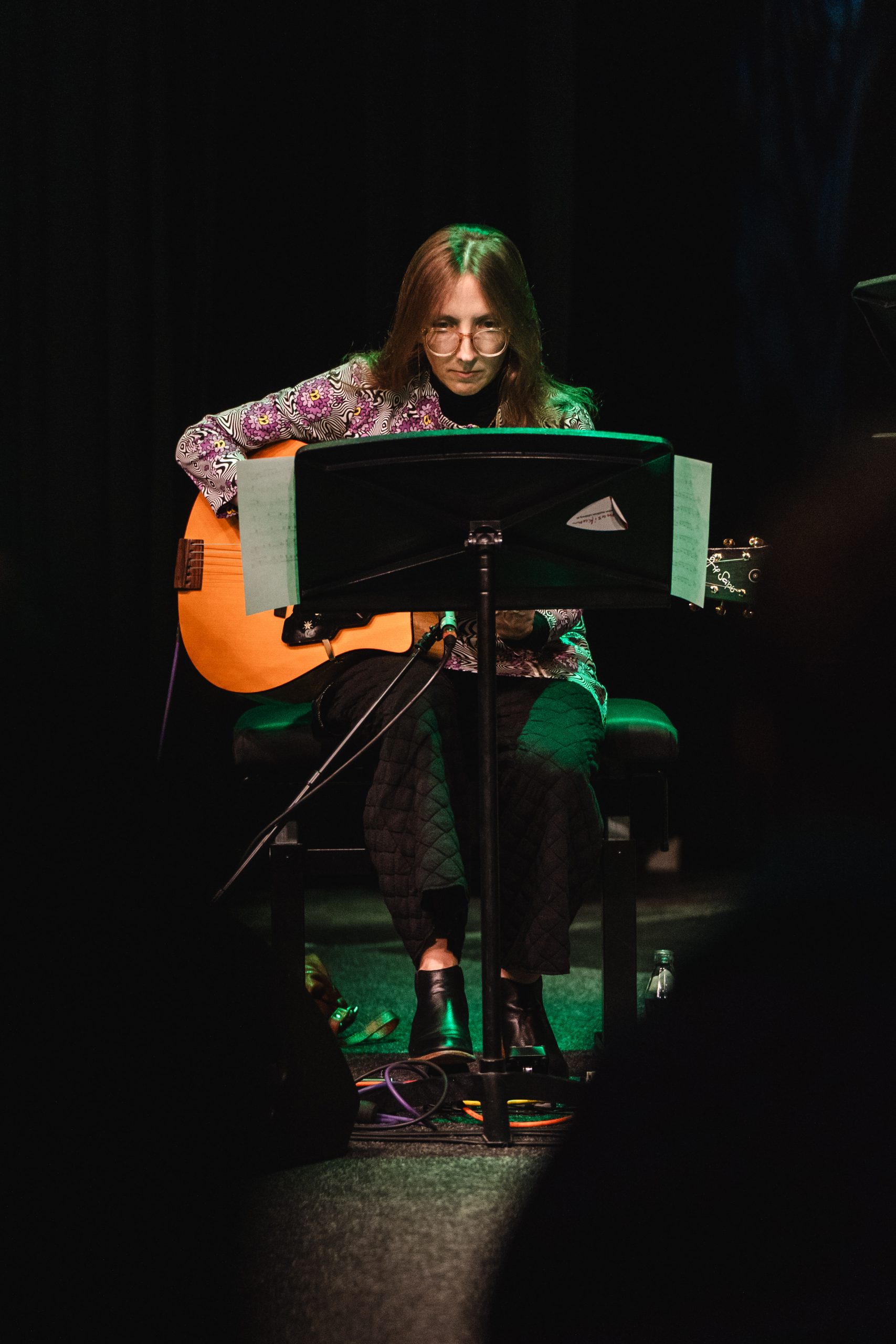
As mentioned earlier, Mary Halvorson was indeed the biggest star of the festival, and her place at the top of all jazz guitarists lists is unquestionable. She has won the hearts of avant-garde jazz enthusiasts with a completely original playing style (which is a rarity today), and over the course of about 15 years of band leadership, she has continuously evolved as a composer and arranger, experimenting with new lineups, while also getting closer and closer to what we call jazz mainstream. In this context, we should also consider the lineup of Amaryllis, which has released its two albums for the prestigious (and commercially potent) Nonesuch Records.
Of course, the music that Mary Halvorson plays here is still complex, layered, and above all, compositionally exciting. In terms of arrangements, she achieves a kind of balance, creating tracks with stable rhythms and without too many dynamic variations, which especially comes to the fore in concert. For those who have followed her bandleading career from the very beginning, they might miss a bit more of her recognizable solos, as here she seems to consciously take on a very discreet role, where (in the style of big bands) each track will have one “featured soloist.” The bassist Nick Dunston was particularly appealing to me, but this remains in the realm of subjective preferences – with equal passion and dedication, trombonist Jacob Garchik, trumpeter Adam O’Farrill, or the increasingly esteemed vibraphonist Patricia Brennan shone brightly.
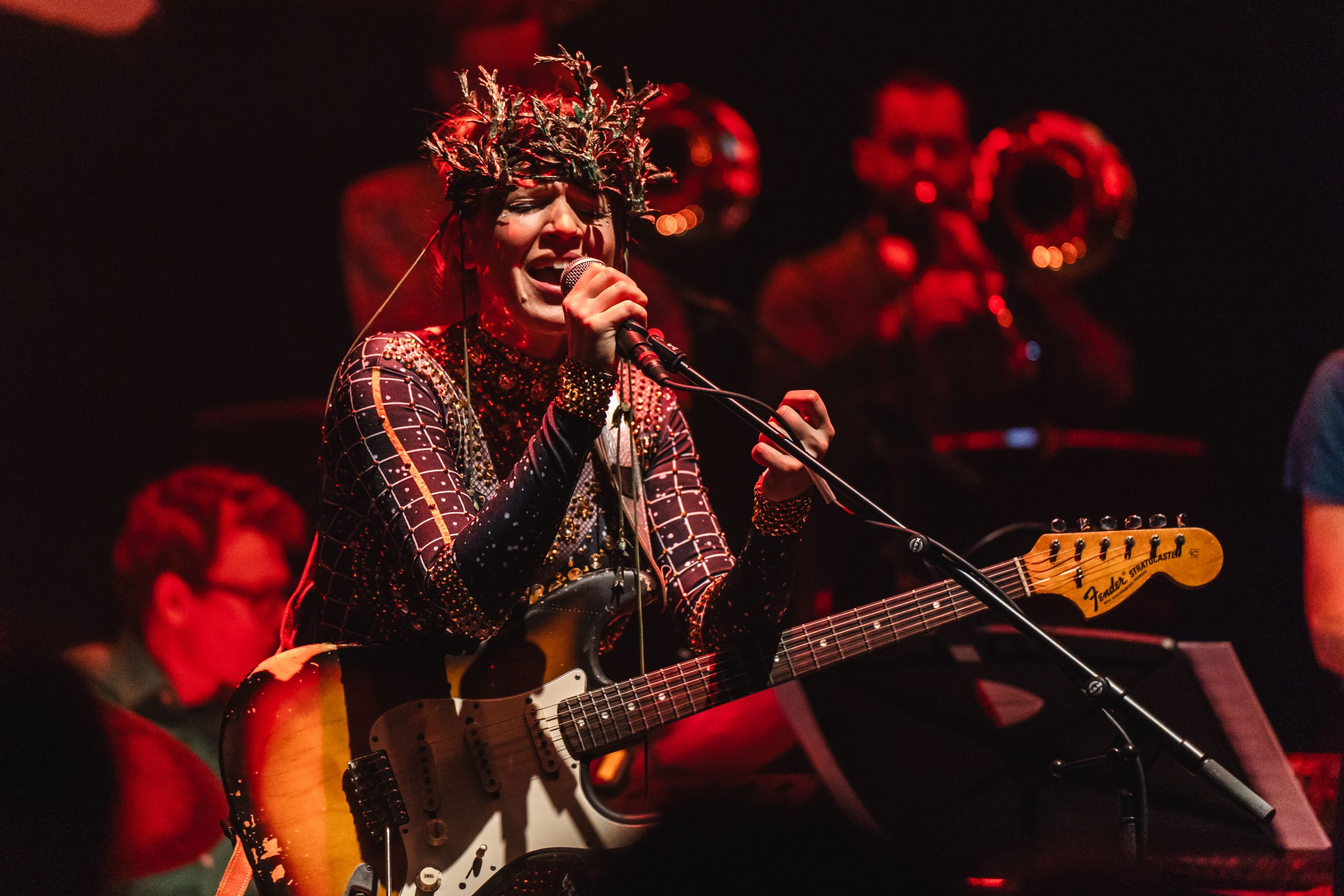
In the synthesis of a performance that was both musically and visually captivating, the Monika Roscher Big Band excelled, described in the introduction as a “prog big band between math jazz, avant-pop, and electronica,” relying on last year’s album “Witchy Activities And The Maple Death.” Adding to the spectacle, the bandleader appeared in an unusual “superhero” costume, making for a comprehensive theatrical-cinematic experience. Between songs, Roscher engaged in long and cheerful conversations with the audience (unfortunately, I don’t understand German!), which further relaxed the atmosphere, already relaxed in its delivery with a strong alternative-rock vibe and exceptional jazz competence in arranging and playful solos.

One of the festival’s stars was also the French accordionist Vincent Peirani. In a pared-down power trio formation, he was accompanied by guitarist Federico Casagrande and drummer Eric Schaefer, as the concert version of the studio lineup from the album “Jokers” (where drums were played by Ziv Ravitz). Naturally, Peirani was in focus as a playing superstar and probably the leading jazz accordionist of today, but always with moderation and thoughtfulness, never overshadowing the songs and never being too intrusive.
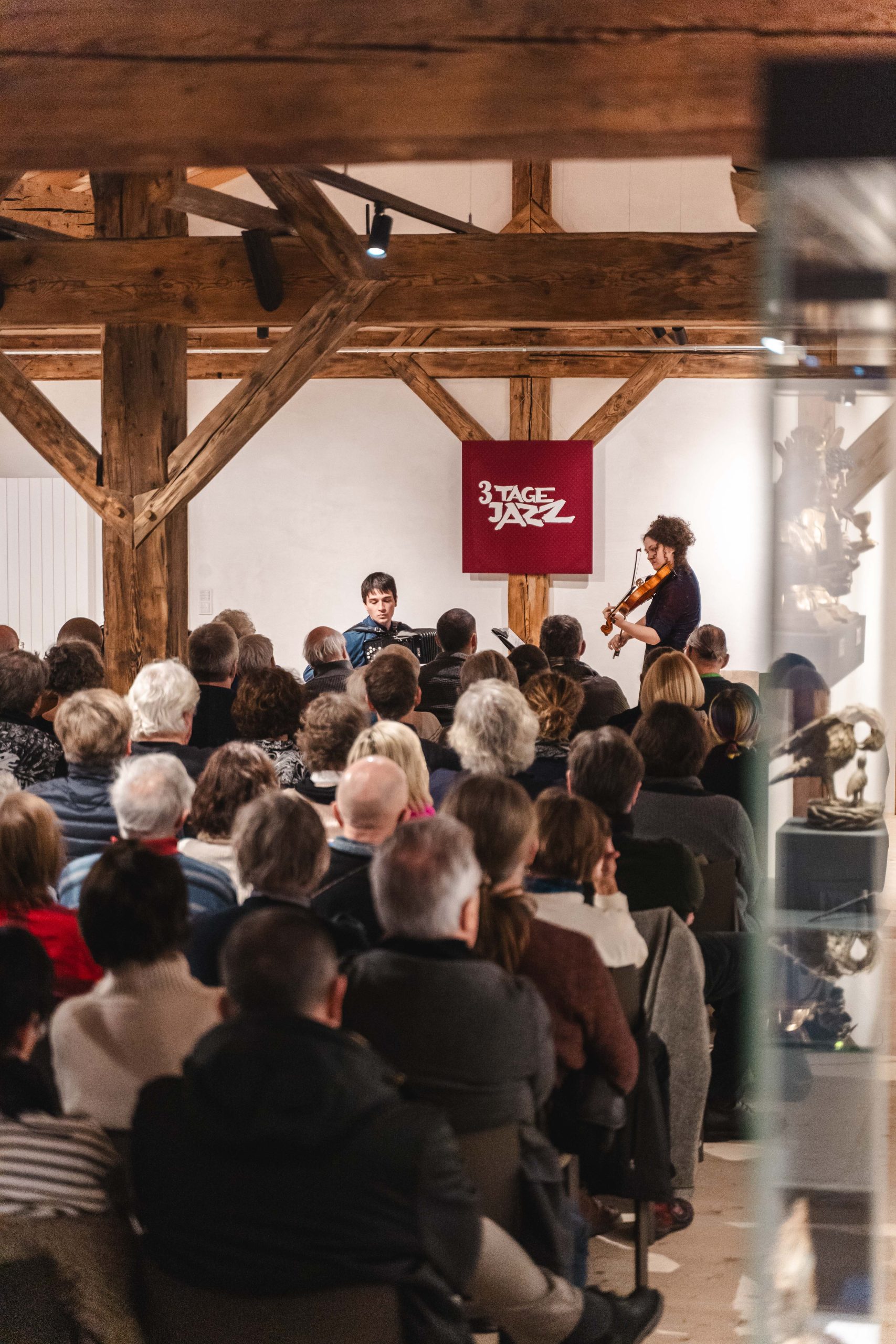
On the festival program there were also four Austrian bands, and here we will focus on the daytime program at the Mining and Gothic Museum (Bergbau- und Gotikmuseum Leogang) in the idyllic village of Hütten, located 12 kilometers from the city of Saalfelden itself. Violinist Flora Geißelbrecht and accordionist Paul Schuberth (in a focus of Austrian music export institutions for years) presented themselves as a duo with such a broad, yet organic and fluid stylistic range, that the phrase “transcending genres” truly sounds accurate. At first glance, it’s easy to pigeonhole them into the world music drawer due to the constellation of instruments, but ethnic motifs here are merely a constitutive element alongside compositions of classical music, jazz improvisation, exciting Jarrett-style vocals from Schuberth (but actually in the vein of well-known accordeonist Otto Lechner), or the more precise singing of Flora Geißelbrecht. New music with an irresistible sense of something we know and love – mastering that balance is an art!
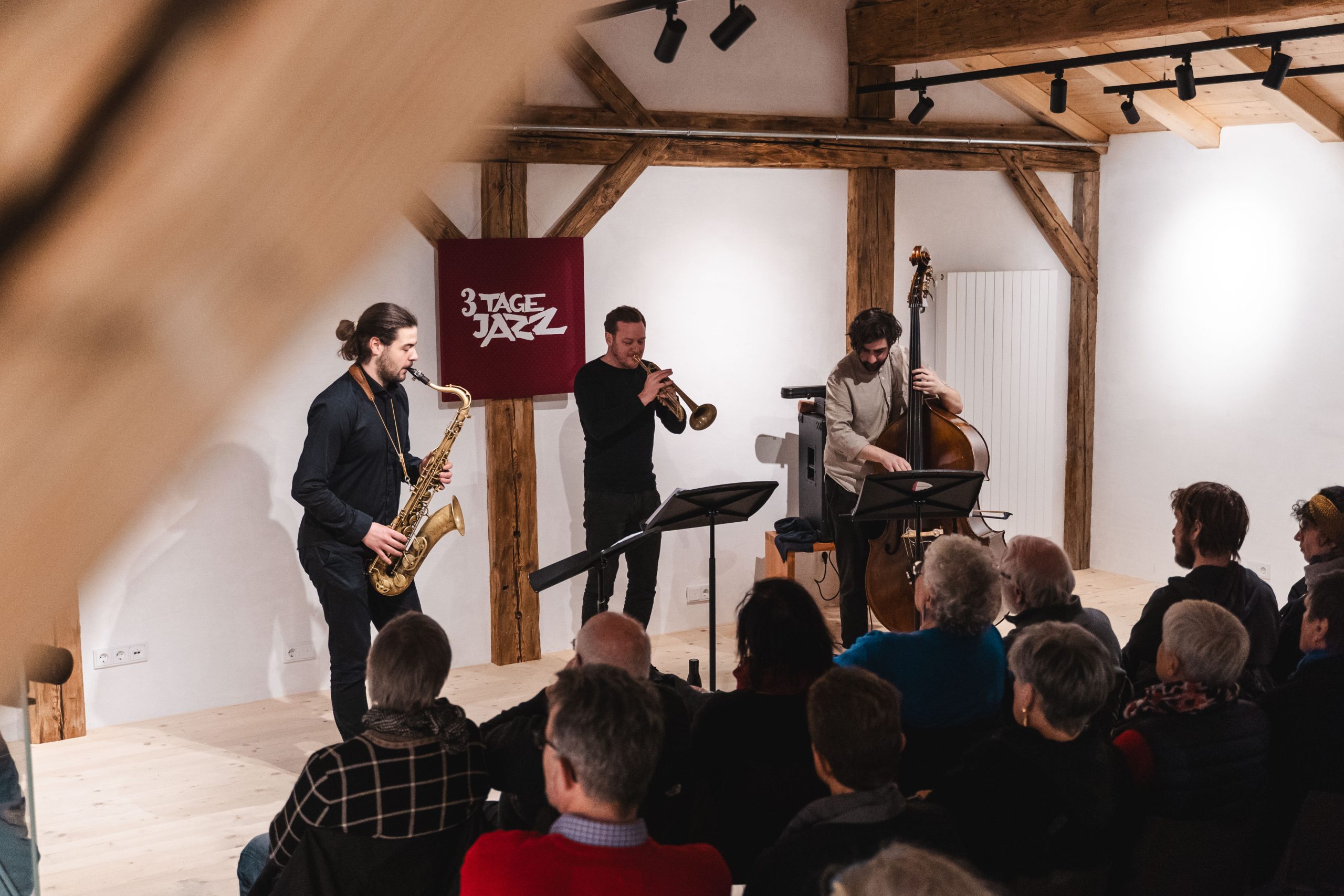
On the other hand, Trio HAEZZ (Vedovelli/Flagar/Eberle) was pure jazz, reminding me of some of the drummerless setups of American trumpeter Dave Douglas. Where the European equivalent would be Martin Eberle, while tenor saxophonist Tobias Vedovelli is like a counterpart to Briggan Krauss from Sexmob. So, we have an exceptional trumpeter within the modern jazz idiom and a playful saxophonist who can play in a virtuoso manner like Charlie Parker but also like a free jazz saxophonist who’s having a good time. And the whole band playing together, playing with roles, sounds very simple and unpretentious, but musically very seductive.
If for years we’ve only thought of spring and summer months as good for traveling to jazz festivals across Europe, now is the time to redefine former attitudes and see some new options. In contrast to the pomp and (over)crowded festival stages of the most famous European jazz festivals, 3 Tage Jazz offers visitors a greater focus on individual artists, better concentration, and the leisure to follow everything properly, all within a more intimate atmosphere. For jazz fanatics from Serbia, this is also an opportunity to break the traditional winter jazz slumber when the domestic offer (of foreign jazz performers) is mediocre and barely existent. Long live Saalfelden!

